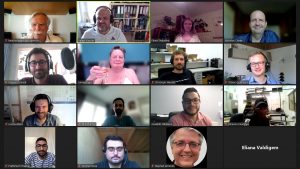
The research colloquium on “Green” topics in audio provided both, a more general overview of a wide range of opportunities for more sustainable audio products and an in-depth analysis of the acoustic and electrical properties of new amplifier platforms with focus on efficiency.
The presentation started with a discussion of why “Green” is so important, how the industry can make products more efficient and what “more efficient” means in terms of product development in audio – an approach that does not match the current product development strategy in all aspects. The principle and available research of noise harvesting was highlighted, along with the advantages and disadvantages of this method and the possibilities offered by available products.
A technology that aligns with the goals of the “Green” theme is the Class G amplifier topology. A technology from the 1980s that reduces the problem of high heat generation due to high currents and voltages in typical Class AB amplifiers, thus increasing efficiency. The amplifier switches between two power supplies with different rail voltages depending on the listening level and programme material. This leads to less power consumption and heat dissipation at lower levels while reducing distortion at higher levels, resulting in a cost-saving, small device with high performance.
The Class G amplifier topology was analysed more deeply in terms of acoustic and electrical properties. An interesting theory emerged: linear amplifiers do better – but when? Based on signal statistics and current amplifier measurement techniques, usable power ranges and the efficiency of different amplifier designs were shown, always in relation to the practical application of music signals and the perceived loudness.
We would like to thank the experts who shared their expertise with us. They offered a wide range of topics as well as areas of work and research at different levels of complexity where everyone could find their level to start or continue with the “Green” topics in audio.
A video of the presentation is available on YouTube.
Additional Information
- Jaehoon Choi, Inki Jung, Chong-Yun Kangab – A brief review of sound energy harvesting
- Harvesting Sound Energy from Passing Cars
- ARCAM – Class G – the ultimate amplifier technology
- Angus, Jamie – Ultra Efficient Linear Amplifiers
